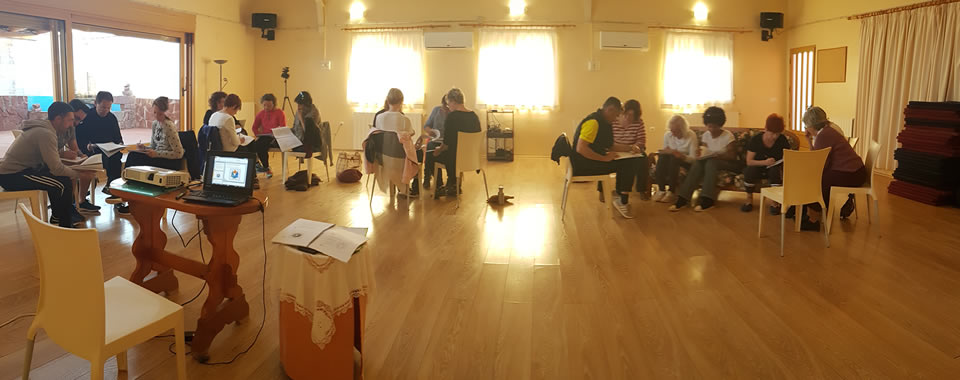What do sports have that make a crowd swell at their feet and attract such intense and passionate loyalty? At first glance, we might think that it is about pride, fascination with competition and triumph. But, although these motives can produce pleasure and emotion, they do not explain the immense feelings of respect and reverence caused by a demonstration of athletic excellence. What encourages the public is the intuitive recognition of the heroic struggle required to overcome human limitations and achieve new levels of feats.
High states of consciousness are also frequently experienced by athletes. It has been widely documented that long-distance runners achieve sublime states of peace and joy. This raising of consciousness, in fact, often inspires the prolonged transcendence of pain and exhaustion necessary to achieve high levels of performance. This phenomenon is commonly described, in terms of self-pressure, as the fact that the athlete makes a maximum effort until he breaks the barrier of execution and the activity is performed miraculously without effort. The body then seems to move gracefully and unwrapped at its own pace, as if it were animated by an invisible force. The state of joy that accompanies it is quite different from that of the emotion produced by success; It is a joy of inner peace and unity with all life.
It is remarkable that this transcendence of personal being and that surrender to the same essence or spirit of life, often occurs at a point just after the apparent limit of the athlete's ability. The apparent barrier is based on the paradigm of our own past achievements or what has been recognized as theoretically possible, such as the example of the historical case of the "mile in four minutes": Until Roger Bannister broke that barrier, it was universally accepted that it was not humanly possible to run faster, Bannister's greatness was not only to break that record, but to break the idea of that paradigm to achieve a new model of human possibilities. This breaking of ideas towards the new potential levels has its correspondences in each field of human behavior.
Jacques Mayol, the French lung diving champion, maintains that state by the intensity of his concentration, which keeps him in an almost constant meditative condition. In this way, he transcends ordinary human limitations, because he activates himself to accomplish feats through altered physiology. The deeper you dive, the more your heart rate slows, and the blood distribution is almost entirely concentrated in your brain.
The subjective experience that produces effortless placidity also occurs in other types of physical realizations such as in Traditional Taekwondo and other more highly developed martial arts that clearly demonstrate that motivation and principles are of great importance for extraordinary athletic achievements. The most commonly heard exhortation by coaches is: “Stop using force.” Schools dedicated to these martial arts such as Traditional Taekwondo generate teachers whose most dominant concern is the victory of the higher self over the lower self through control, training and commitment to goals aligned with true power.
The alignment with these attractant patterns of high power is not limited to the exercise of the discipline itself, but it becomes a whole lifestyle. Thus, when the power of the principle is transferred to the practitioner, the result begins to manifest itself in all aspects of his life.
The hallmark of true greatness in martial arts achievements is always humility. Such athletes express gratitude, internal astonishment, and the awareness that their performance was not the result of an individual effort, but that maximum personal effort led them to the crucial point where they were then transported by a power greater than that of the individual self. . This is typically expressed as the discovery of some aspect of the superior Being hitherto unknown or inexperienced in its pure form.
Through kinesiology, we can show that, if one is motivated by any of the energy fields below Courage, one becomes weak. The famous Achilles heel that knocks down not only athletes but the great potential in all areas of human feats is Pride. Pride not only causes the performer to weaken, but also cannot offer the motivational power of love, honor or dedication to a greater principle (or even excellence in itself).
If we ask a powerful Taekwondo practitioner to keep in his mind the hope of beating his opponent, or of becoming a star, or of earning a lot of money, or becoming famous, we will see that he weakens. The same Taekwondo practitioner, thinking of honor, dedication of his execution to a loved one, or even the sheer joy of the maximum effort for the love of excellence, then strengthens himself in a powerful way, and we cannot bend him even making the effort larger.
In this way, the practitioner of a martial art that is motivated by pride or greed, or primarily interested in defeating his opponent, will be weakened at the time of hearing the start signal and will be unable to achieve the maximum continuous effort necessary. to achieve great performance. Sometimes, we see that a Taekwondo practitioner starts very badly for such reasons, but when training or competition progresses and selfish goals are forgotten, he improves his performance. We also see that the opposite happens: when a practitioner starts well because he is competing for the honor of his country, his team or for the love of martial art itself, but then, when it changes for the expectation of personal glory or triumph over a rival , this makes him lose strength and form.
An unfortunate sequence of consciousness occurs when an athlete establishes a new record during the qualifying tests, evoking new personal ambitions, and then during the final competition, collapses to the audience's amazement. If the best athletes are convinced of the belief that their excellence is not a personal achievement, but a gift that belongs to all mankind as a demonstration of man's potential, they will remain strong throughout the entire event.
The scale of consciousness can be seen in an aspect such as a scale of the ego (from 1 to 700 points, of Dr. David Hawkings), with level 200, where personal interest begins to turn into personal disinterest. In the Olympic competitions, the disastrous consequences, both in public and private life, of the motivations emanating from levels below 200, are quite clearly illustrated by the excessive zeal to capture an Olympic medal and defeat its rival by any possible means, which has led to abandon the power of the ethical principle and descend to the grossest levels of force.
When the higher motivations for excellence give way to the domain of grace and power, the self-centered motivations of personal gain attract one almost magnetically towards the domain of force. The harvest of recognitions, even in the symbolic form of a medal, has little to do with the greatness of true Taekwondo practitioners, which comes from an achievement of the height of spirit; That's why we praise the champions. Even if the Taekwondo practitioner does not give up the desire for wealth and fame, the urgency in achieving mastery of martial art, instead of manifesting all the excellence one is capable of offering, has its own adulterated and self-centered effect becoming the negative forces associated with the level of Pride.
There is nothing intrinsically wrong with some manifestations of pride. We can all very well be proud of winning in a tournament or that our teammates win medals, but that is a different kind of pride. It is by honoring the human conquests that we transcend personal pride. We honor the effort, not the personal achievement, which is only the occasion and expression of something greater, universal and innate to the human heart.
There is the case of the Olympics, one of the greatest dramas of human competition, and one that captures the imagination of everyone, offers a context that should counteract personal pride. The whole scenario inspires the competitor to move from personal pride to esteem that is an expression of unconditional love, and also honors the honor of opponents for their dedication to the same sublime principles.
The media tend to evoke the inconveniences of sports and undermine the athlete because his celebrity status, whether consciously or unconsciously, awakens this egolatry. Great athletes should take care of themselves against this source of contamination. Humility and gratitude seem to be the only effective shields against the aggression of the exploitation of the media. Practitioners of traditional martial arts employ specific exercises to overcome any tendency towards selfishness. The dedication of one's own abilities, talents, or careers to a greater principle, offers the only absolute protection.
The true power in martial art is characterized by grace, sensitivity, inner peace and paradoxically, the gentleness in the non-competitive lives of fierce competitors. We congratulate the champion because we recognize that he has overcome personal ambition through sacrifice and dedication to the highest principles. The great become legends when they teach by their example. It is not what they have, nor what they do, but what they have become inspire all mankind, and that is why we honor them.
He should protect his humility from the forces of exploitation that accompany the ovations of daily life. We need to teach the public that the skills of athletes and their great executions are gifts to humanity that must be respected and defended from the abuse of the media and corporate commerce.
The spirit of Taekwondo resides in the heart of every man and woman. Great practitioners can, for example, raise awareness of that principle in all people. These heroes and their spokesmen have a potentially powerful influence on all mankind, as they literally have the power to carry the world on their shoulders. Promoting excellence and recognition of their values is the responsibility of all men, because the search for excellence in any area of human effort inspires us all towards the realization of every form of human greatness not yet realized. Definitely, martial arts have a fundamental contribution in the education of the human being.


